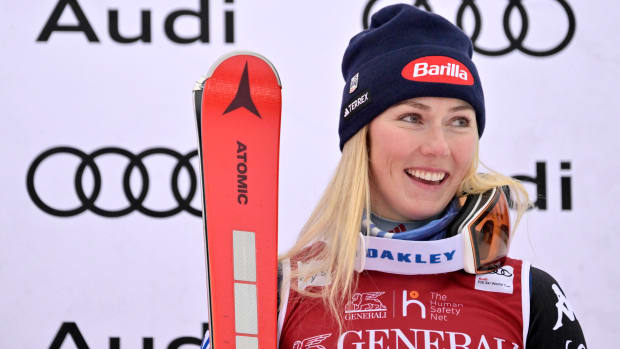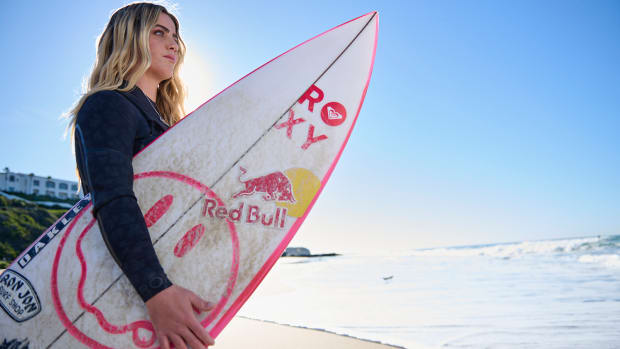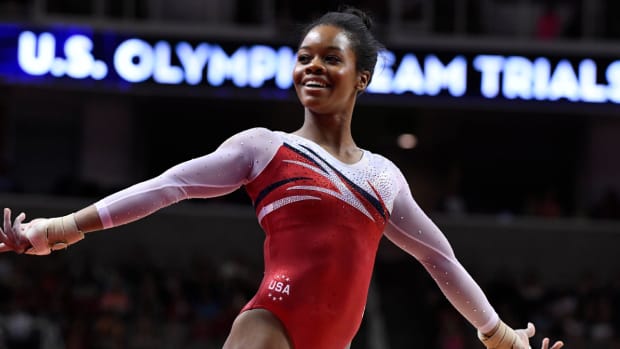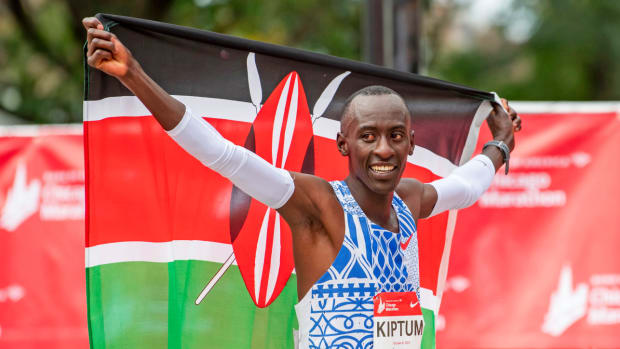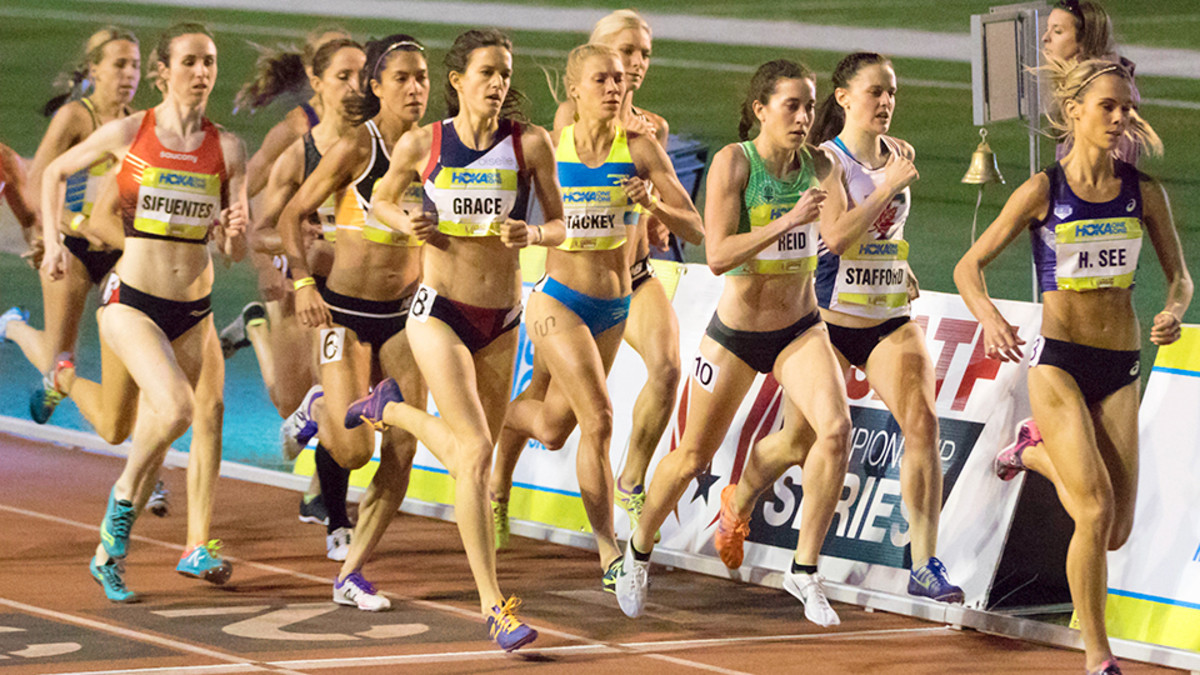
Danny Mackey: Why runners must harness momentum before Trials
With a few weeks remaining before the 2016 Olympics, hundreds of athletes are making the final push to represent their country in Rio de Janeiro come August. Track and Field takes its place in the spotlight every four years, but the preparation needed to reach the starting line begins long before the big moment. Running goes beyond just putting one foot in front of the other as fast as you can. And coaching a runner is more than just telling someone to push harder.
Danny Mackey is the head coach of the Seattle-based Brooks Beasts training group, which includes two-time Olympian Nick Symmonds and other emerging U.S. distance runners. Mackey has been entrusted by his athletes to guide them and help make their Olympic dreams come true.
Each month, Mackey will write a first-hand look for Sports Illustrated discussing the training, races, and preparation of his runners as they aim for the 2016 U.S. Olympic Trials in July and the 2016 Olympics in August.
We’re just under 40 days out from the track and field U.S. Olympic Trials and just over 70 days out from the Rio Olympics, and for members of the Brooks Beasts right now, it’s about building momentum slowly. We want our athletes to be near the front of races running Olympic standard times on an average day, because we still have plenty of time to put in hard work before Trials and continue to build momentum. As Kevin Durant said after the Thunder’s Game 1 win against the Warriors in the NBA Western Conference Finals, “It was an 82 game season, we are just trying to get better, every single day.”
The first few meets of the spring are finished, and overall, the Beasts had a solid showing. Athletes spend 95% of their time training and 5% of their time racing, and I love both for different reasons. There is no hiding any flaws or mistakes when it comes to racing. Some of our runners competed in the Payton Jordan Invitational on May 1 in Stanford, Calif., and others raced in the Hoka One One Middle Distance Classic on May 20 in Los Angeles. If I gave the last two meets a grade, for the team, as a whole it would be C+/B-. That might sound harsh or pessimistic, but that’s the reality. However, it’s not that bad, because those grades show that our trajectory is on a positive slope.
Nike sues 800-meter runner Boris Berian, rocks track and field world
At the Payton Jordan, Garrett Heath ran 13:23 in the 5,000-meter run to hit the Olympic standard. Katie Mackey surprised herself to step down in distance (she normally races the 1,500 meters or the 5,000 meters) and hit the Olympic standard in the 800 meters, running 2:01 against some of the best 800-meter runners in the country. Casimir Loxsom was second in the 800 meters, coming within three-hundredths of a second from the win. And the nicest surprise was Justine Fedronic—after spending all of 2015 on the sidelines due to injury, the Nike-sponsored athlete who represents France but trains with the Beasts in Seattle opened up her season with a 2:00.61 in the 800 meters.
At the Hoka One One Middle Distance Classic, Drew Windle stood out with his section win in the 800-meter run against some of the fastest 800-meter runners in the U.S. Riley Masters opened up on the track for the first time in 2016, running a 3:38 in the 1500 meters, Phoebe Wright and Mackey overcame some tactical errors to finish strong in the 800 and 1500 meters; both crossed the line third and clocked Olympic standard times.
Nick Symmonds, who just returned from competing overseas, had some ups and downs in his race week. Ups: T-Mobile’s CEO John Legere won Symmonds’s auction to own advertising space on his shoulder via temporary tattoo. Downs: Nick’s company Run Gum had their lawsuit dismissed by a federal judge in Portland, Ore. about 12 hours before he lined up to race. I know that Symmonds can focus in the midst of a storm and compete, but he cares more about track and field than anyone I have met, and I know he was thinking it was a bad decision for the sport.
Ryan Hill: It takes a team to chase individual Olympic glory
Having an outspoken athlete like Symmonds on such a close-knit team is interesting. It doesn’t impact me, since I only worry about how to make him run two laps of the track faster than anyone else in August, but I can only imagine what someone like Hannah Fields, a first-year professional from Oklahoma Baptist University, thinks when she comes to practice and hears Symmonds talking about a lawsuit with the USATF or auctioning off ad space on his body.
One of the big training adjustments that our team makes in May is the addition of hard, race-specific training sessions. In the fall and winter, we avoid intense work because the human body can only handle so much wear and tear. Being over-trained or injured gives you no shot at running when the championships roll around. Now is the time of year when the Beasts ride a very fine line and balance vomit-inducing workouts with resting enough so they can compete and race. Stress the system, rest the system and the system gets stronger (and faster). Stress the system too much, sit on the sidelines.
I trust and deeply believe in the athletes I coach, and I try to train them just enough to get a response and let them back off. Like I said in my previous post, they are genetic freaks, once they are ready, I get out of the way and let their momentum carry them.
A week of training with the Brooks Beasts
Here is a look at what the 1,500m and 5,000m group (Dorian Ulrey, Riley Masters, Garrett Heath and Matt Hillenbrand) did in the lead-up to the Hoka One One Middle Distance Classic.
Wednesday: 15 mile long run at 6:20-6:00/mile pace.
Thursday: 10 miles recovery effort. Core work and light plyometrics.
Friday: Two miles at 9:10, one mile at 4:24, 9 x 400 at 62 seconds, cut down to 53 seconds. Weight room.
Saturday: Seven miles for recovery.
Sunday: 11 miles down to 5:50/mile pace.
Monday: Four miles at 4:48/mile pace. Weight room.
Tuesday: Nine miles for recovery. Core drills.
Wednesday: 12 miles easy. Light plyometrics.
Thursday: 14 x 300 meters. 46 down to 39 seconds per 300. Weight room work.
Friday: Race day.
